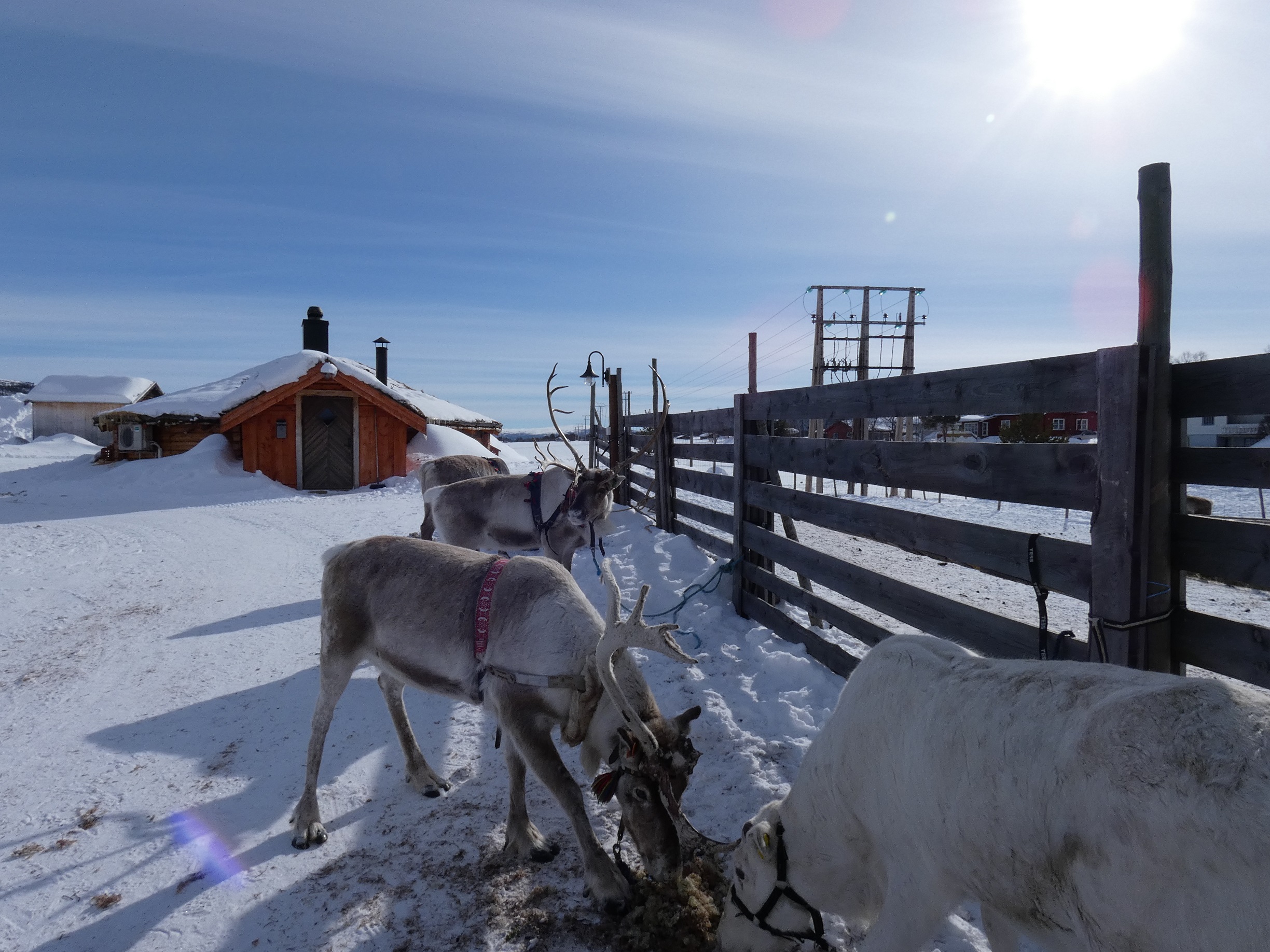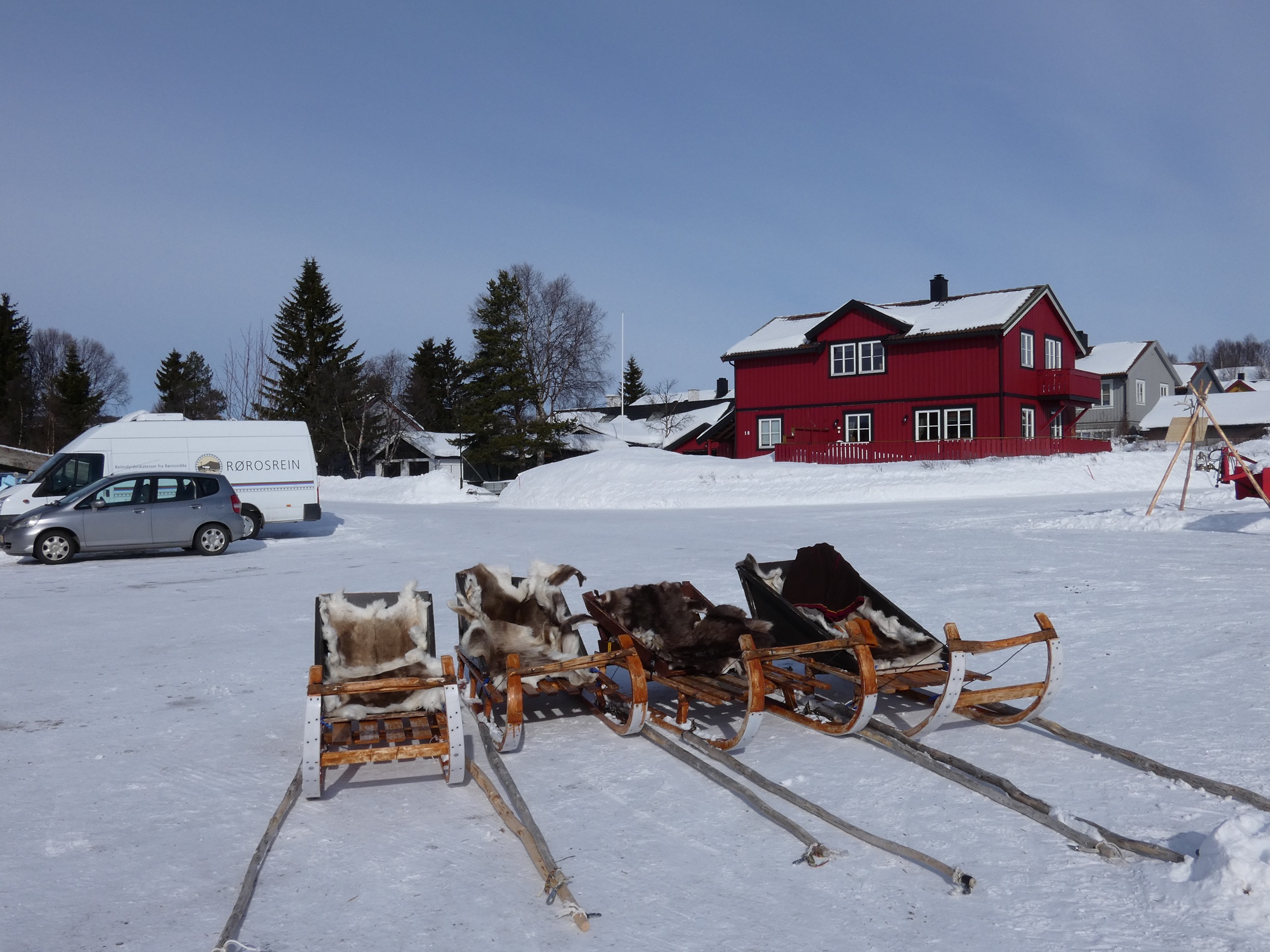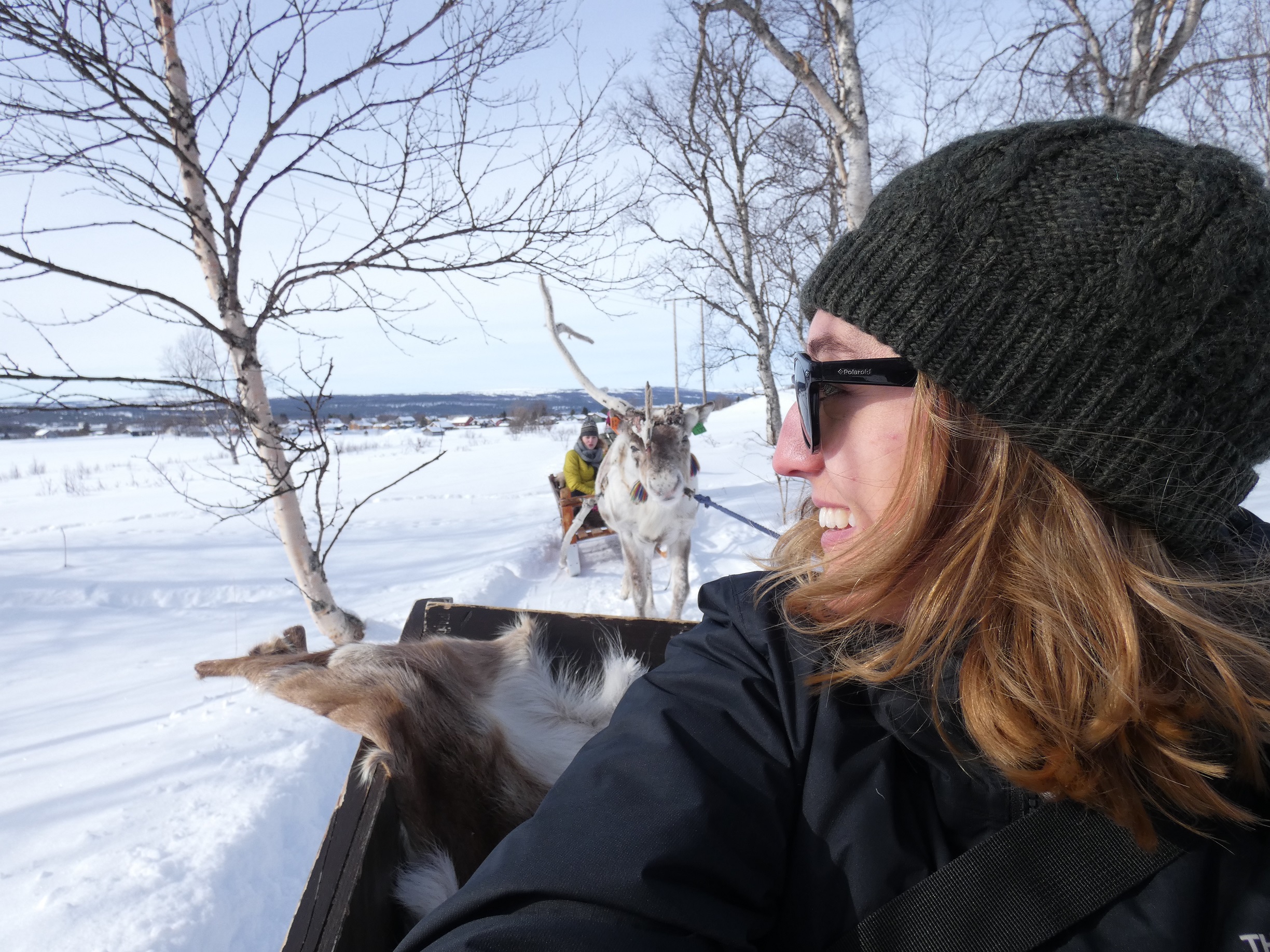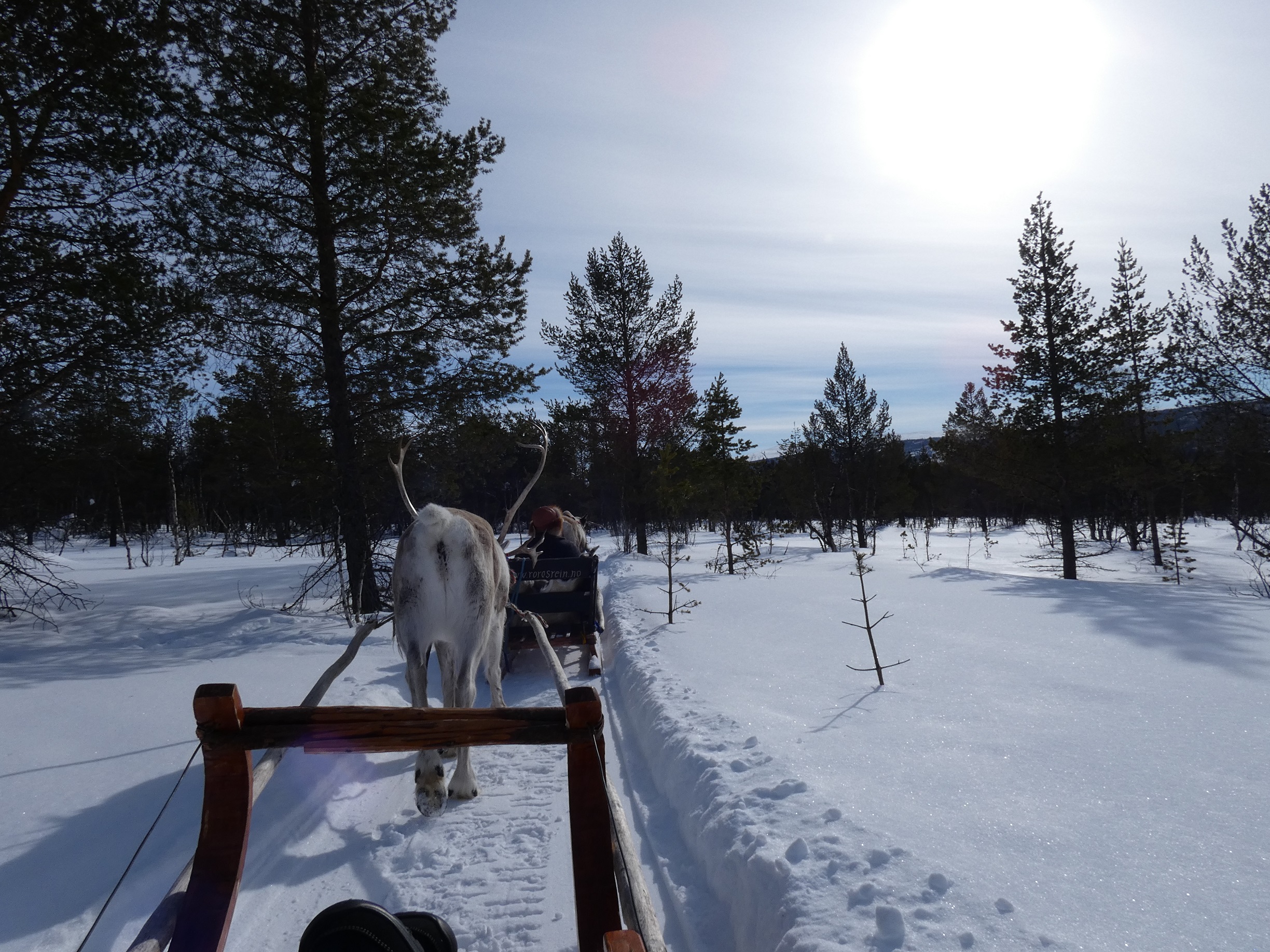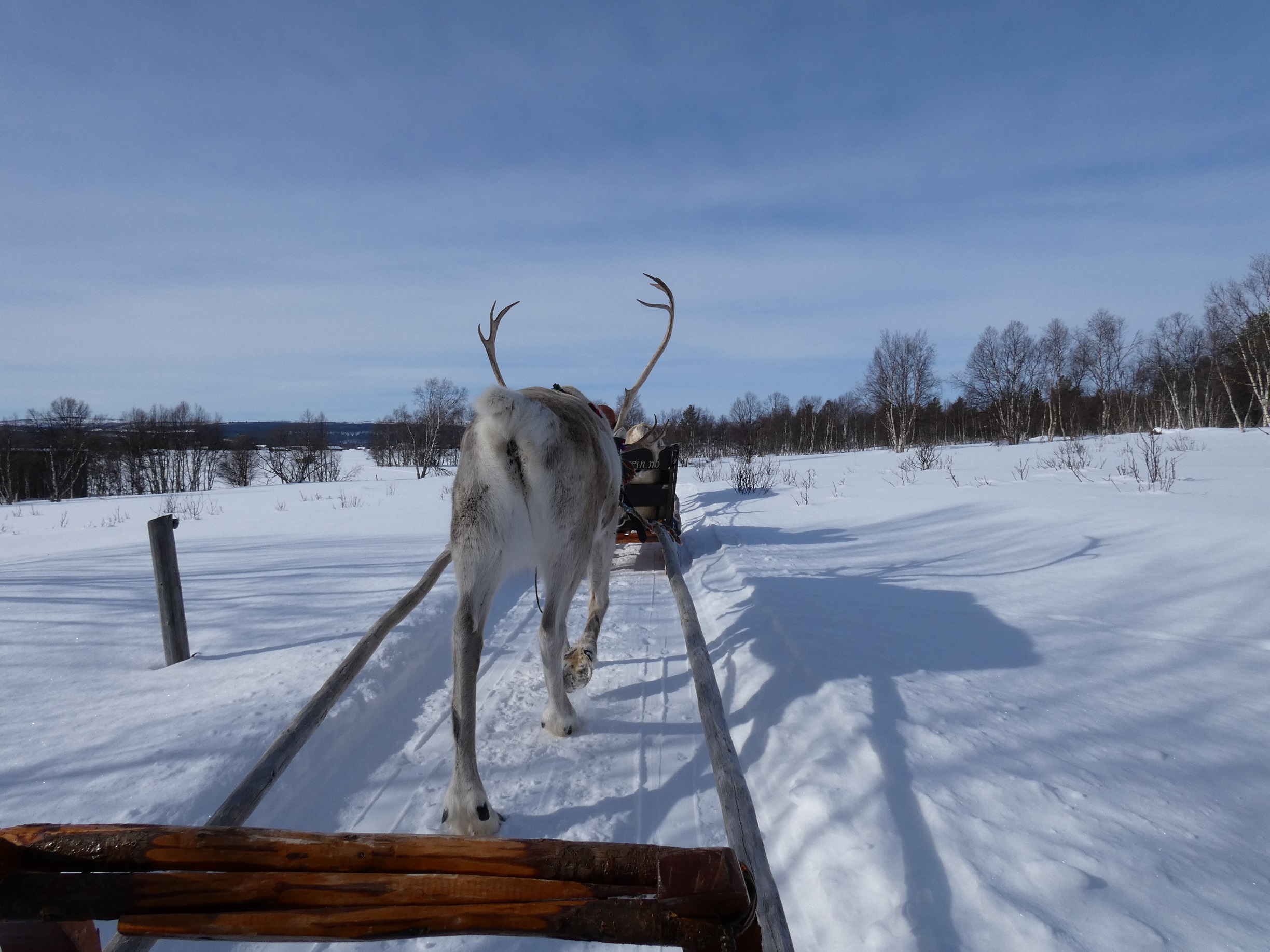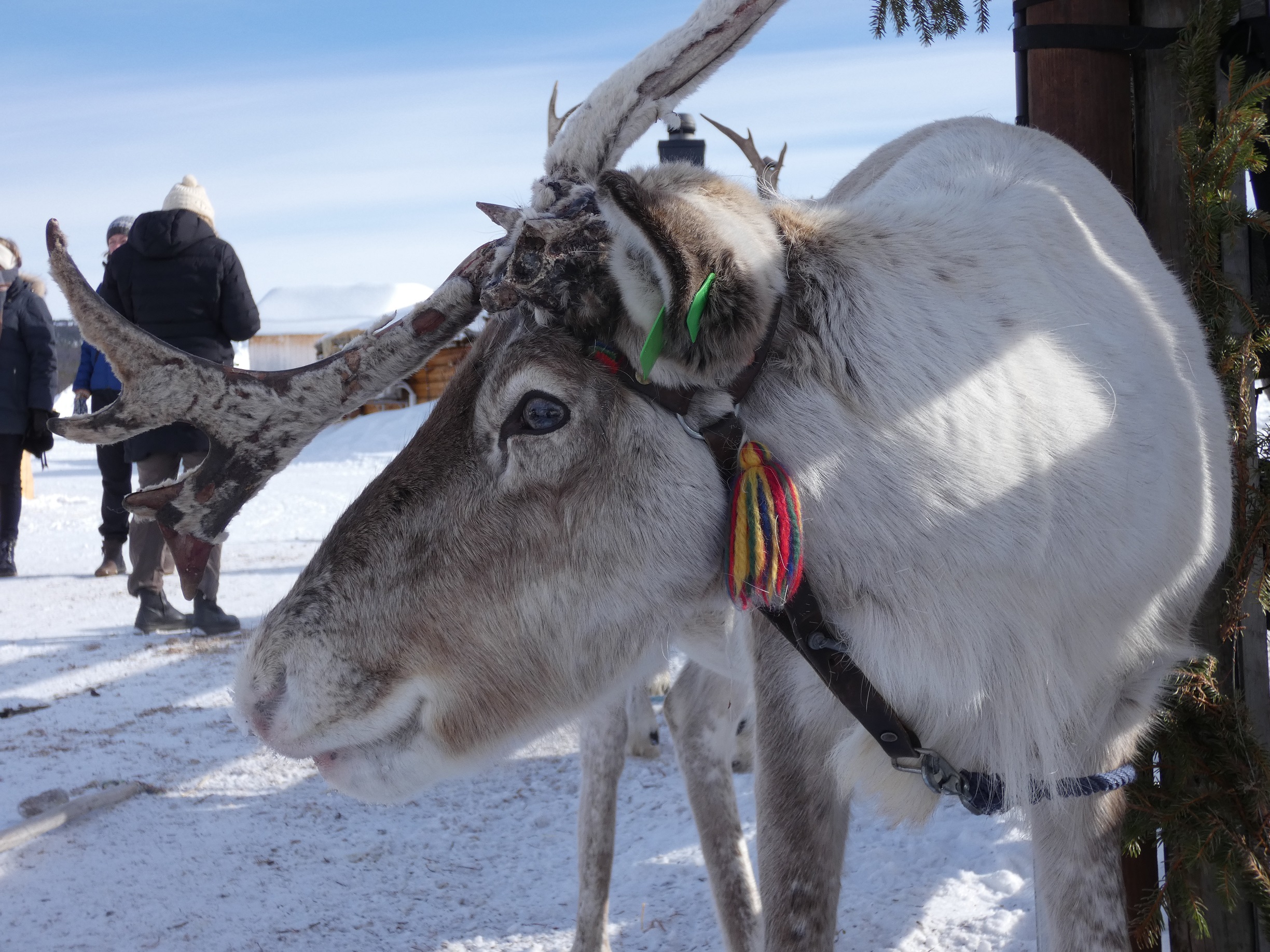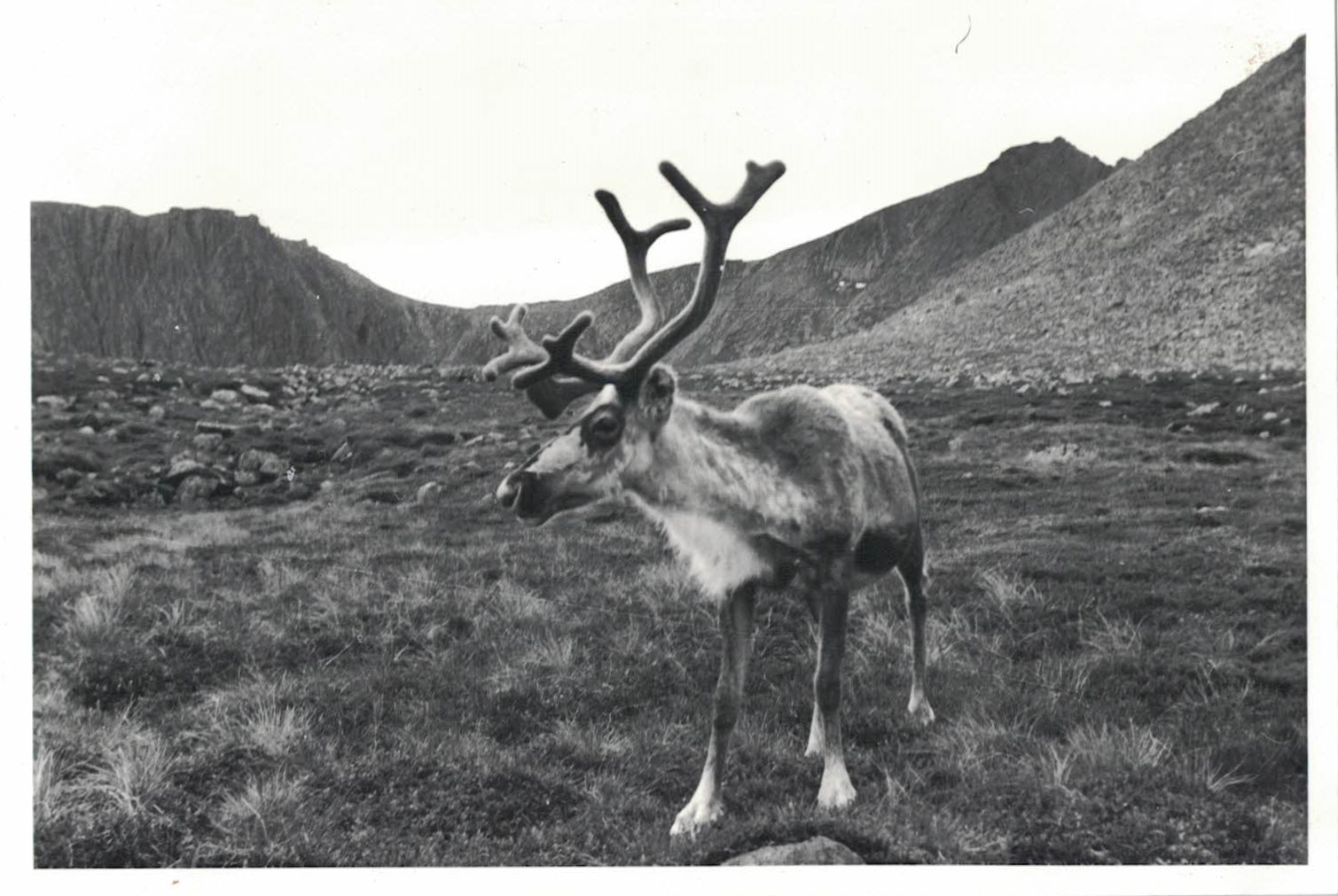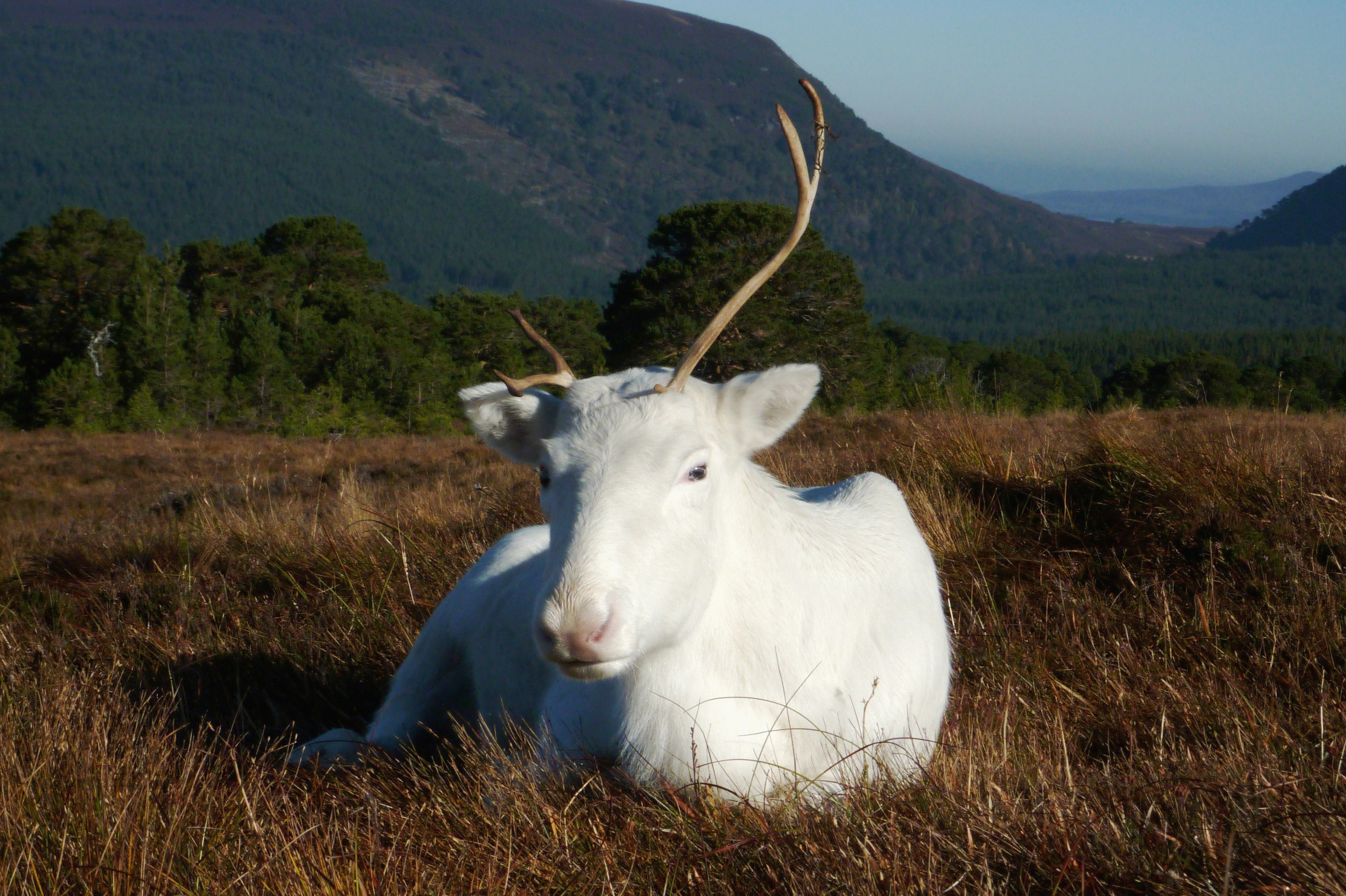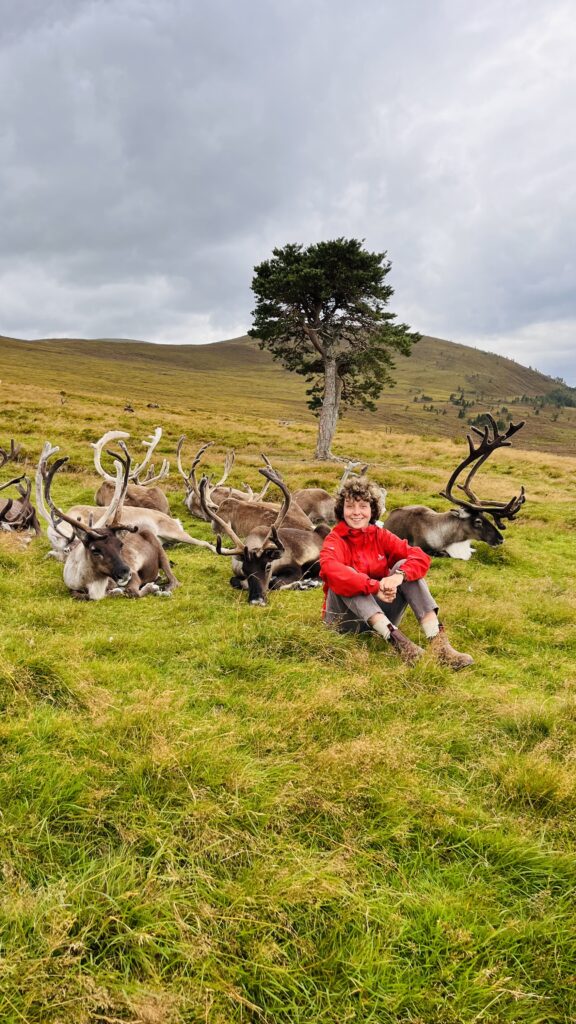
It was 2022 I think, when I found a book in a local Waterstone’s in Kent entitled ‘An Arctic Life’ by Tilly Smith. At that point I had a road trip with my dog planned for the Cairngorms and fancied a book for the trip based in the area. I wasn’t aware that reindeer were free-roaming in the mountains, or that a wild herd had even been reintroduced to the UK (as a conservation student back then – shame on me!).
The book was so fascinating I read it twice! (And I’m not just saying that because the author is now my boss…) It was so interesting learning about a species reintroduction project that had been done in a way that still needed hands on husbandry management. I knew I wanted to learn more about how the herd was cared for, and the impact the reintroduced reindeer had had on the ecosystem.
In 2024 I left previous my job and took some time out road tripping Europe and the UK – and was lucky enough to see reindeer throughout North Norway and Finland! My interest in reindeer had grown and as soon as I got back home, I emailed the Cairngorm Reindeer Centre and asked if I could volunteer.
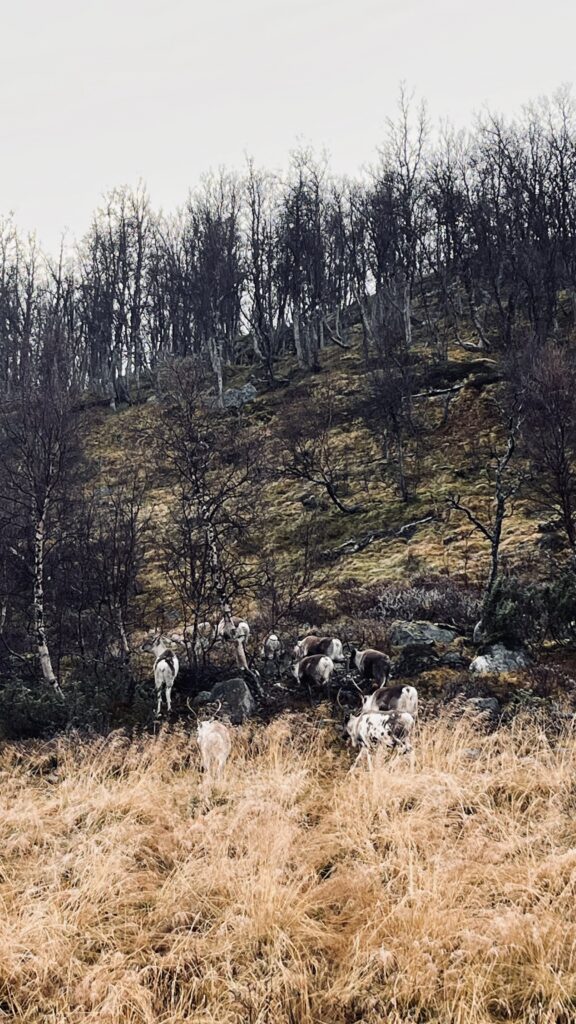
In May this year, I set off in my van for Glenmore to volunteer for a week with the herd. I was so excited and couldn’t wait to learn about the reindeer and experience how they lived within the mountains. Any expectations I had in coming here where well and truly surpassed.
For anyone who’s been to Glenmore, you’ll know exactly what I’m talking about, and for those of you yet to travel here you’ll have to put up with my description that does not do justice to the breath taking beauty of the hills and mountains. The views of the rolling landscape went on for as far as I could see, and everyday I spent up on the hill with the reindeer I couldn’t believe how amazing it looked. The pine trees descended the hill towards Loch Morlich, and the beautiful hills rose up again the other side. The reindeer stood amongst the heather, their winter coats still hanging on and the purples and greens of the plant life framing them so perfectly. It felt like a real pinch me moment, and every day I was full of mixed emotions knowing that while I was loving every minute of each day, I was going to have to leave.
Having had an incredible week learning about these amazing animals, getting to know a few individuals by name, gaining experience in working with the reindeer, and having met the loveliest and most welcoming group of people I had ever experienced in a workplace – I knew I had to find a way to stay!
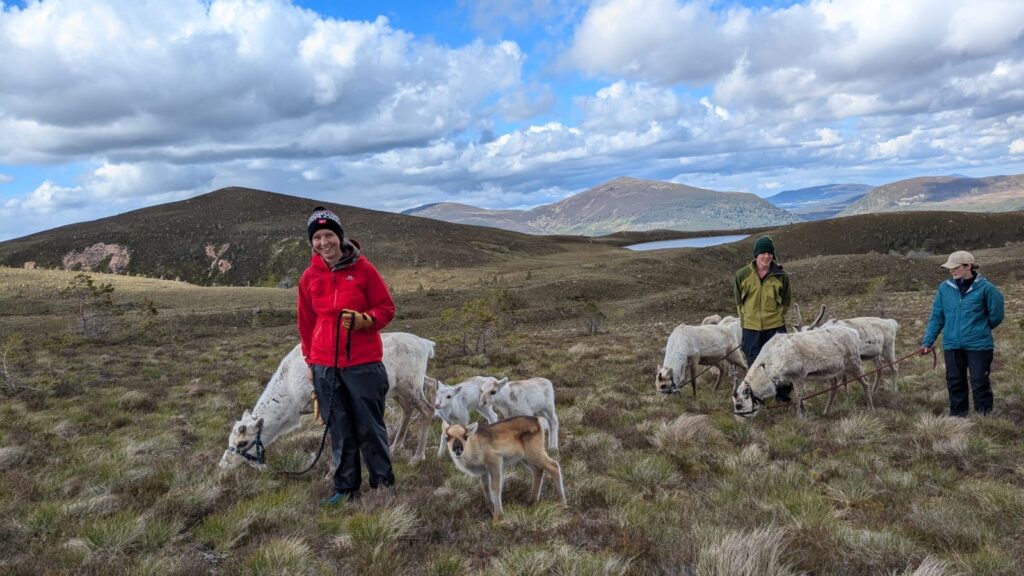
I can’t have been completely useless, because two months later I was packing up my camper and my dog and I set off on the 600-mile journey to move to Glenmore! I was full of excitement the entire build up to the move, trying to remember all the reindeer IDs I had managed to learn while I’d been volunteering, the different morning tasks I had done, the information I had learned – all so I could hit the ground running and hopefully continue to not be completely useless. (My first incredible sights of the reindeer again quickly dispelled any hope in identifying anyone as I took in all their identical deep brown summer coats!)
It has now been almost a whole month since moving to the mountains and becoming a reindeer herder, and I can quite confidently say this is the best decision I have ever made. Not just because the reindeer are amazing, and the people fantastically welcoming and have made it feel like I’ve been apart of the team for ages, but because for the first time (maybe ever – not to be too dramatic), I feel completely at peace. Exploring the mountains with my dog on my days off, anticipating the excitement of being back at work and seeing the reindeer, and my fast-paced days as a herder filled with reindeer related tasks. My mind is clear with fresh mountain air and only thoughts of reindeer and where to hike next!
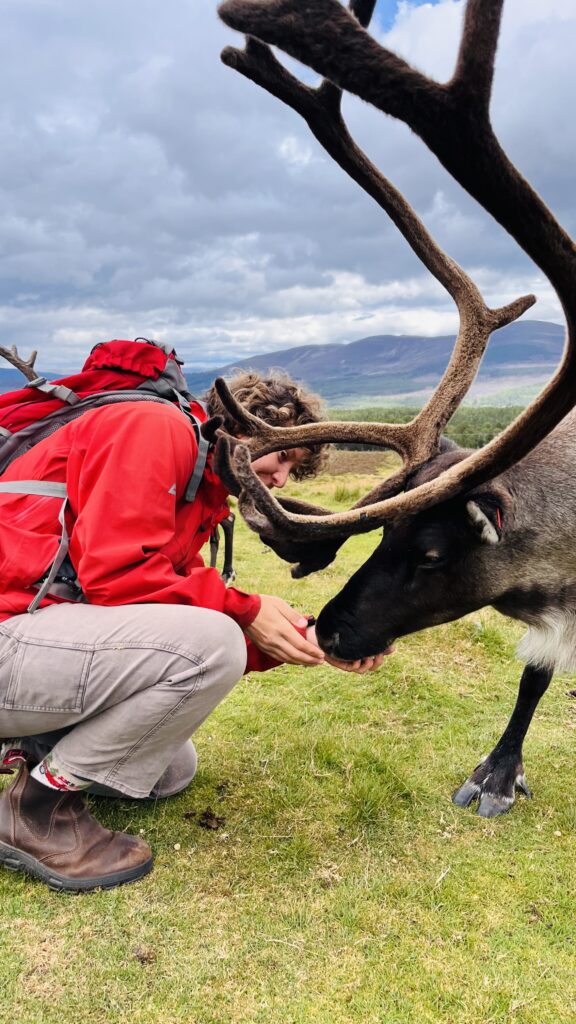
It’s so exciting to have every day filled with learning new information and skills, getting to take visitors up to the reindeer in the hill enclosure and talk to them about how fantastic these animals are, and to stop and take in how unbelievably lucky and grateful I am to have this job and call this place home.
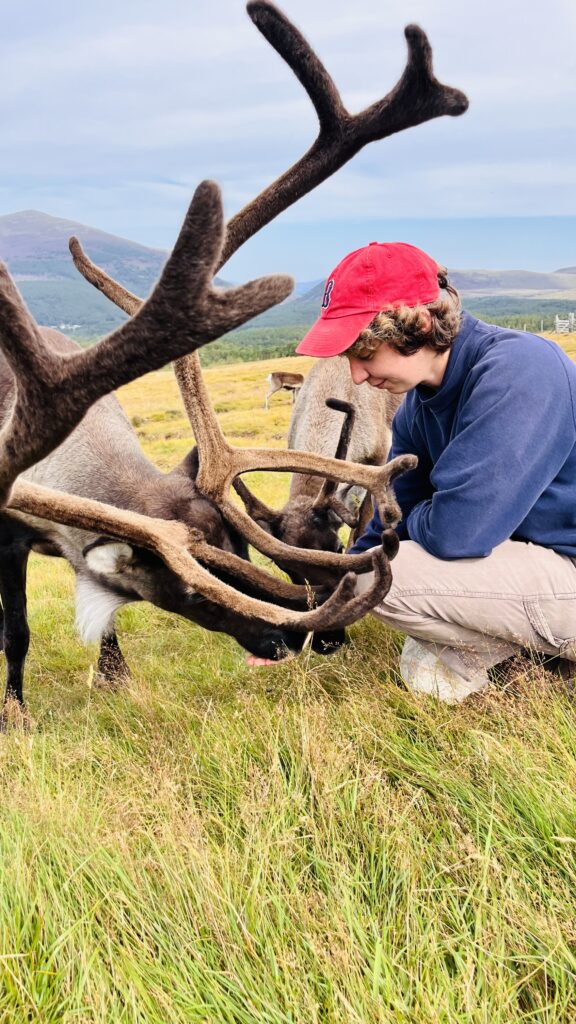
The highlight of my month so far has to be the first time I saw reindeer out free ranging in the mountains – six cows and a calf wandering through some heather. I walked a little way down to the path alone, equipped with a small bag of hand feed, and called to them. To my absolute delight (and relief as I had members of the public watching me) they immediately came over to me at quite some speed. With the occasional stop to hand feed the leader and the odd call, I lead them through the heather towards the river in the hope of walking them back into the enclosure. I got them quite far before a steep descent of a hill put them off following me any further, and as I stood below them looking up at the reindeer silhouetted by the sun, I had a chuckle to myself that I was getting paid to do this!
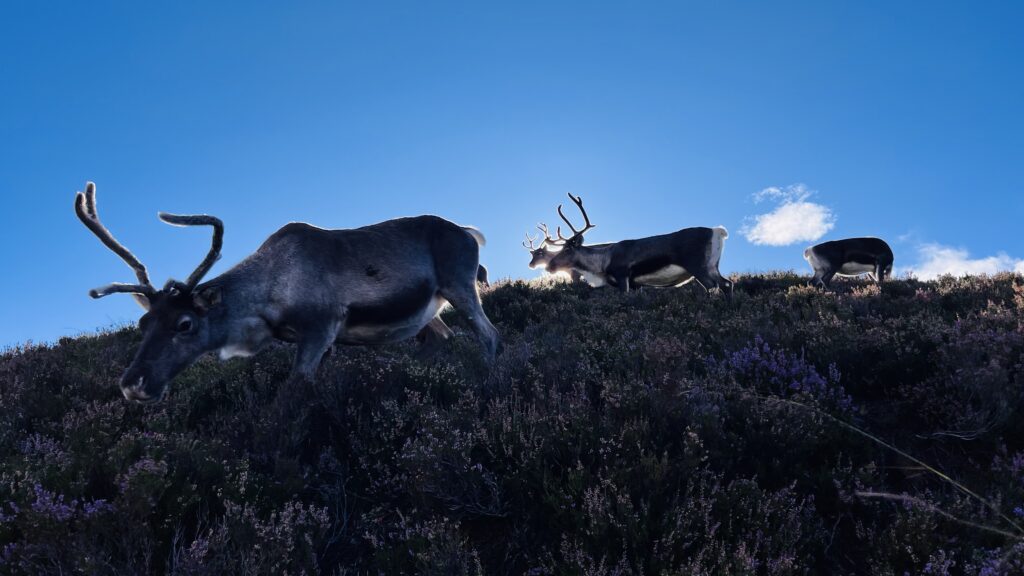
The reindeer finally made it back into the enclosure after quite a lot of tempting, calling, and encouragement with head collars (oh yeah – and my colleague Cam turning up and doing most of the work with his years of experience to my three weeks! Thanks Cam), and I really felt like a reindeer herder.
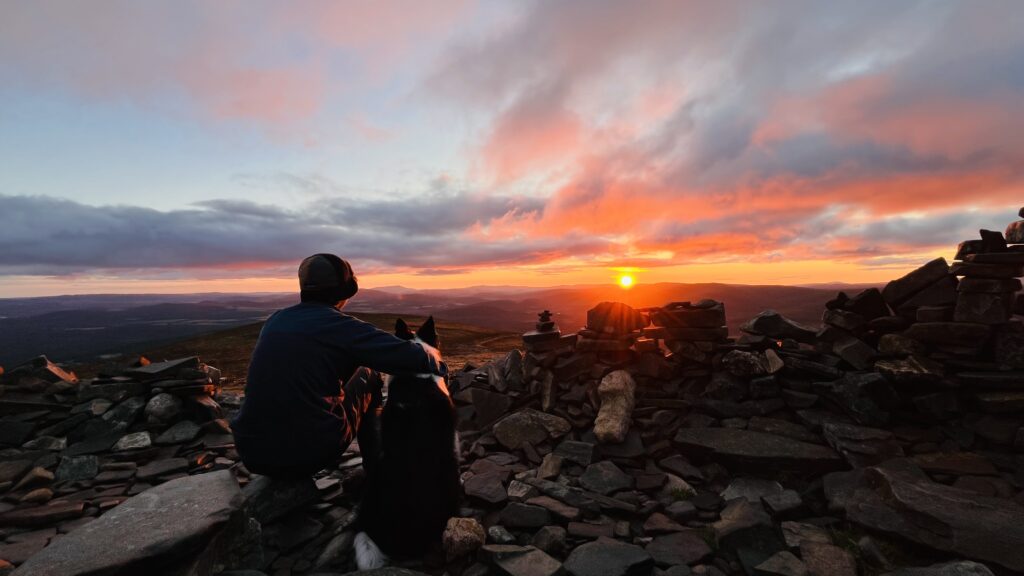
Daisy

